The dual-camera OnePlus 5 features a 16mp sensor with a 24mm f/1.7 lens as its primary camera, together with a second 20Mp sensor and 36mm f/2.6 lens to offer additional features.
Each utilizing Sony-made full-color sensors, both cameras combine together to offer a 1.6x optical zoom function. Combined with a feature called “lossless digital zoom,” the OnePlus 5 also promises an improved out-of-focus background bokeh in its Portrait mode, for more artistic people pictures.
Tested using the primary 16Mp sensor and 24mm lens in default mode, the OnePlus 5 achieves an overall DxOMark score of 87 points —an excellent result! A consistently solid performer for stills and video, the OnePlus 5 boasts a Photo sub-score of 87 points and a Video sub-score of 86, delivering impressive results in both bright and low-light conditions.
Shooting stills, its main strengths include vivid color rendition with accurate white balance, and good detail preservation along with fast and smooth autofocus. For smartphone video enthusiasts, the OnePlus 5 offers 4K 2160p/30fps capture, as well as 1080p/60/30fps and 720p/30/120fps resolutions. The default mode provides 1080p/30fps with accurate exposure and white balance in all conditions, and fast convergence under changing lighting conditions. Other video strengths include fast and accurate autofocus, and an effective stabilization system.
Outdoors: Outstanding color and detail
Shooting outdoors, the OnePlus 5 delivers generally good target exposure, ensuring many excellent shots with good tonality, color, and texture. It records wide and very acceptable dynamic range in many outdoor exposures, although an occasional loss of shadow detail in high-contrast scenes is evident. This said, highlights are well-preserved in HDR exposures, which makes the OnePlus 5’s approach a sensible one, as it’s easier to lift the shadows in post-production than to recover over-exposed highlights.
We also noticed some ghosting (or blurring) in some HDR exposures, which can lead to a strong loss of detail in some areas; although infrequent, it’s a little problematic, as the effect cannot be effectively corrected in post-production.
Color rendering is excellent, ensuring vivid and pleasant hues, with slightly punchier saturation compared to the iPhone 7 and the Samsung S8, and on par with the Google Pixel. Color shading is slightly visible in outdoor exposures, but it’s not overly concerning, and white balance is generally accurate and neutral. Excellent texture preservation is another of the OnePlus 5’s key strengths —recording similar levels of fine detail as some of the best devices we’ve tested, including the Google Pixel and the Samsung S8. Noise reduction is also good, especially under bright light, and although some luminance noise is visible in homogenous areas (such as the sky when shooting outdoors), it’s not a significant concern.
Indoors: Good, but inconsistent
Low-light exposures in very low-light conditions remain useable. Detail preservation is also very good, but there’s noticeable blur and loss of detail in some handheld shots compared to those shot on using a tripod.
In blur-free low light images, levels of detail are similar to, if not slightly better that those of high-end performers such as the Samsung S8 or Google Pixel, but these devices produced consistently sharper handheld images — particularly the Samsung S8.
In sharp low-light images, very fine details are also lost as you’d expect, but aside from blurry handheld shots, low-light detail is impressive on the OnePlus 5. Under bright fluorescent light indoors, noise reduction is excellent, but a buildup of luminance noise is visible in lower light conditions.
The noise grain also varies between a noticeably coarse luminance noise to a finer and less-obvious rendering on other images, which are more pleasing.
White balance is generally accurate in low light, and although shots under tungsten are a little pinkish, and there’s a cooler blue/greenish cast under fluorescent light, neither is unacceptable. Especially in brighter indoor conditions, color rendering is as vibrant as outdoors . Slightly more color shading is evident in low-light images compared to outdoor shots, however, especially in very low-light tungsten images, which displays color shifting from pink in the center to green at the edges.
Details: Explaining the score
Exposure and Contrast (90)
The OnePlus 5 achieves an excellent score for exposure and contrast, thanks to accurate target exposures in all conditions, with wide dynamic range in many outdoor shots and usable results in very low-light conditions. Some loss of shadow detail in high-contrast scenes is evident, but HDR exposures preserve bright highlight detail, which is a bonus.
Color (84)
The OnePlus 5 achieves a good overall score for color. Color is better in bright light compared to low light, but hues remain vivid and pleasant and color shading is well-controlled in all lighting conditions.
Autofocus (92)
The OnePlus 5’s hybrid contrast detection and phase detection autofocus system (DCAF + PDAF) achieves an excellent score, thanks to consistently good performance in all lighting conditions. Face detection focus, continuous AF in preview, and automatic scene detection are excellent, with fast, accurate, and responsive performance. Our repeatability and accuracy tests measured over 30 consecutive shots, and the OnePlus 5 achieved consistently in-focus shots using both auto and trigger mode in bright and low-light conditions. The only drawback is slight oscillation using preview mode in low-light environments.
Texture (89)
Noise (83)
Achieving an excellent bright light texture score with fine detail preservation on outdoor images, the OnePlus 5 rivals some of the best devices we’ve tested. A lower score for low-light texture reduced the overall score, with slightly inconsistent results indoors with a visible loss of detail on some (but not all) handheld shots compared to those taken using a tripod.
Noise scores of 86/100 in bright light and 83/100 in low light are a little more consistent, with some luminance noise visible in homogenous areas in outdoor shots and in low-light exposures, which sometimes renders a coarse grain effect.
Artifacts (86)
A good score for artifacts, which the OnePlus 5 controls reasonably well. Some slight ringing, color fringing on high-contrast edges, and a visible loss of sharpness in the outer field is visible on 100% crops, but they’re not seriously detrimental to overall image quality.
The ghosting or blurring of some outdoor exposures is more problematic, as it results in a significant loss of detail in large areas of the picture. It happens only sporadically, but worth being aware of to try to avoid.
Flash (84)
The OnePlus 5’s dual LED flash unit achieves a solid overall score of 84, thanks to good target exposure and detail preservation, with accurate white balance and nice color. Slight exposure instabilities over consecutive shots are noticeable when mixing flash with additional tungsten light sources, and some color shading is visible, but white balance remains accurate. On flash-only results, heavy light attenuation in the corners is visible, but towards the center of the frame there is good detail preservation, with nice color rendering and accurate white balance.
Video (86)
The OnePlus 5 achieves good target exposure in all lighting conditions with fast and stable exposure convergence when changing scenes. White balance is accurate in all lighting conditions, again with fast convergence, and color rendering is good in all lighting conditions, with minimal color shading evident, even in very low light. Detail preservation is good, but there’s a visible loss of low-contrast details in all lighting conditions. Noise reduction is excellent in bright light, scoring 93/100, but slightly worse in low light at 69/100, with visible luminance and chromatic noise. Autofocus is fast, accurate, and consistent in both bright and low-light conditions, as is the stabilization system. Some artifacts, including abrupt frame shifts during panning, a visible judder effect, and slight ghosting in low light are also evident in some videos.
Photo Pros
- Accurate white balance in all lighting conditions.
- Vivid and pleasant color in all lighting conditions.
- Good detail preservation in bright light conditions.
- Fast and smooth autofocus in all lighting conditions.
- Very stable autofocus in both auto and triggered mode.
Video Pros
- Good target exposure in all lighting conditions.
- White balance is accurate in all lighting conditions.
- Fast exposure and white balance convergence.
- Fast and accurate autofocus in all lighting conditions.
- Good stabilization in all lighting conditions.
Photo Cons
- Occasional strong loss of details in outdoor conditions.
- Very fine details are lost in low-light conditions.
- Ghosting effect sometimes visible in outdoor conditions.
Video Cons
- Visible loss of low-contrast details in all lighting conditions.
- Visible luminance and chromatic noise in low-light conditions.
- Noticeable frame shift with abrupt direction changes during panning.


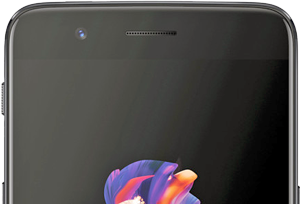



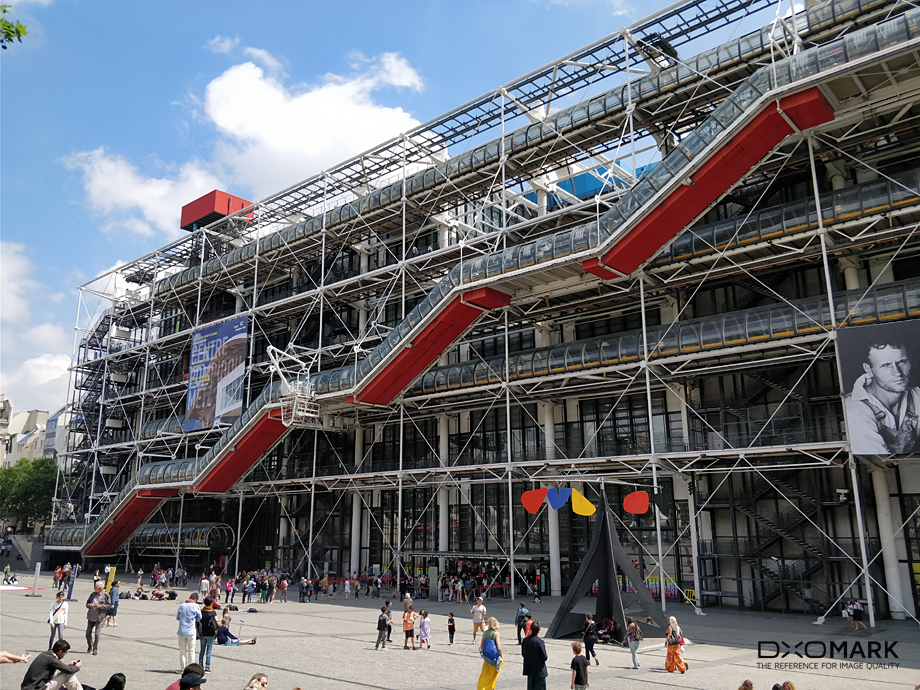
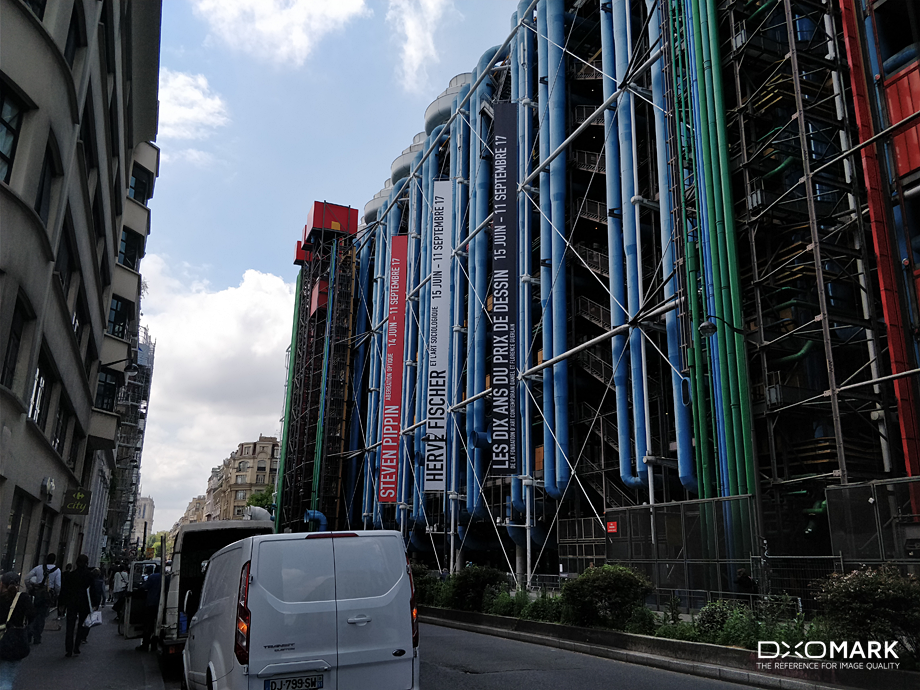
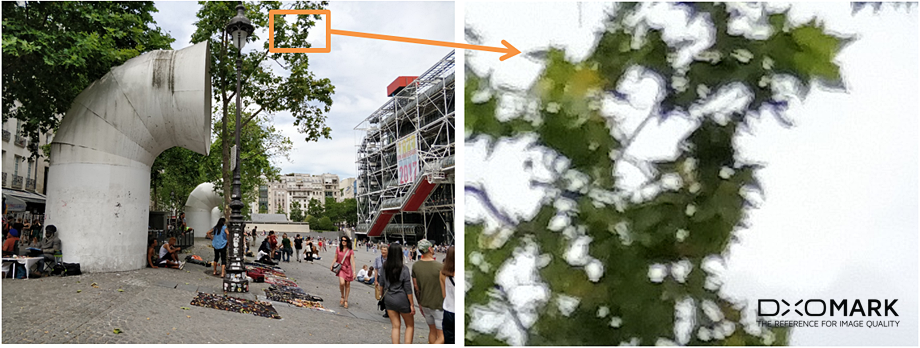
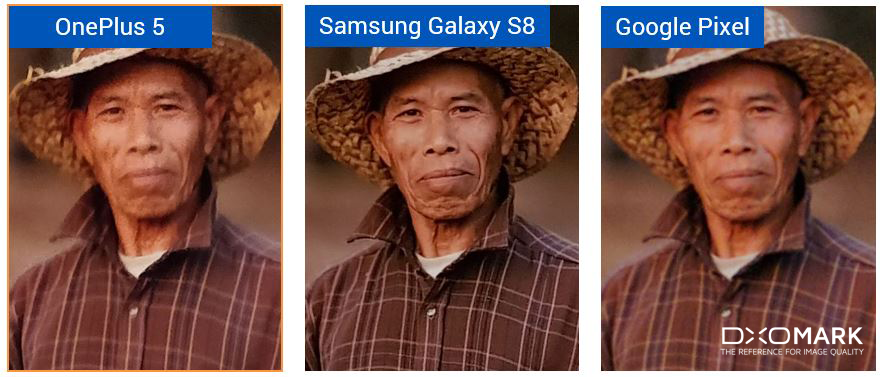
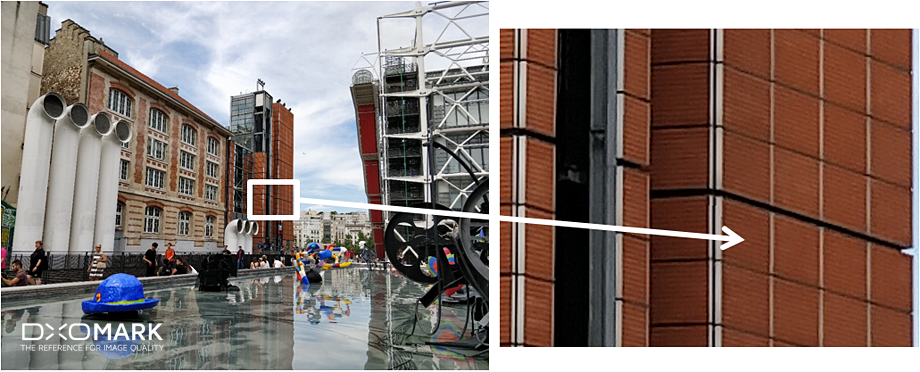


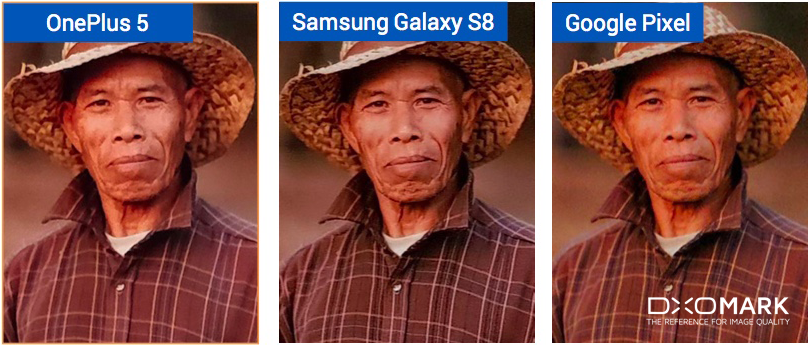

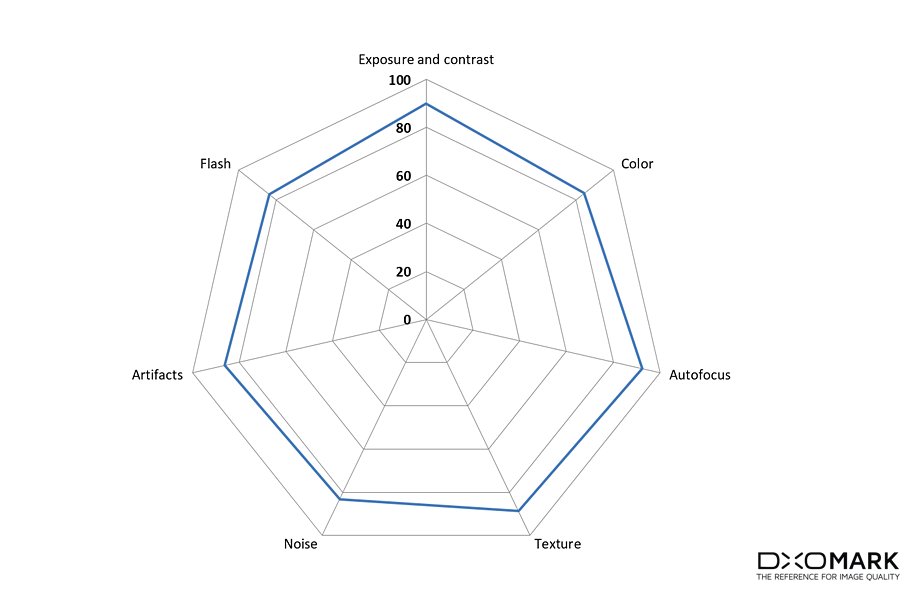
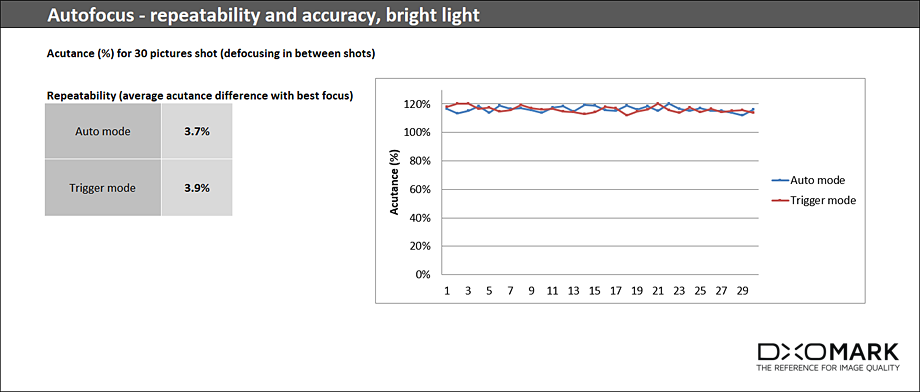
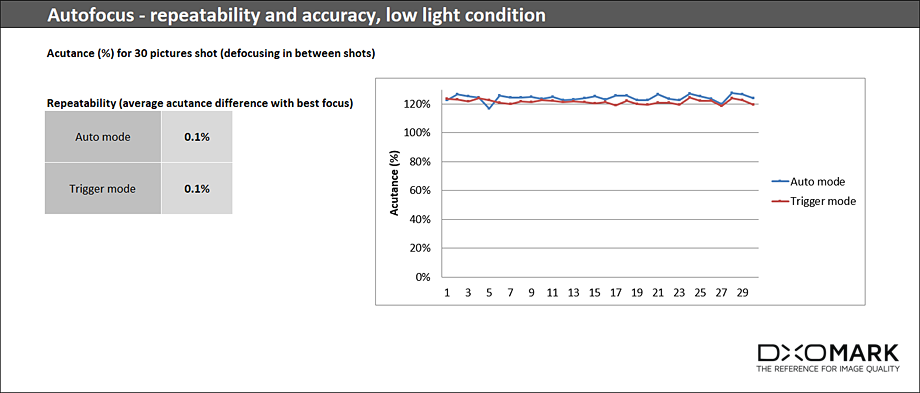
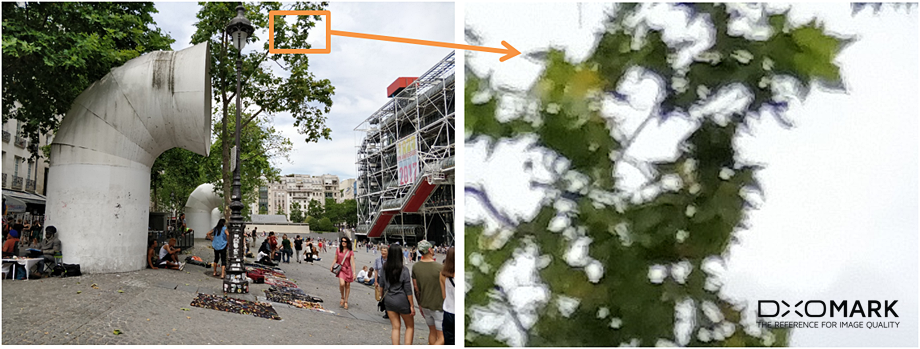
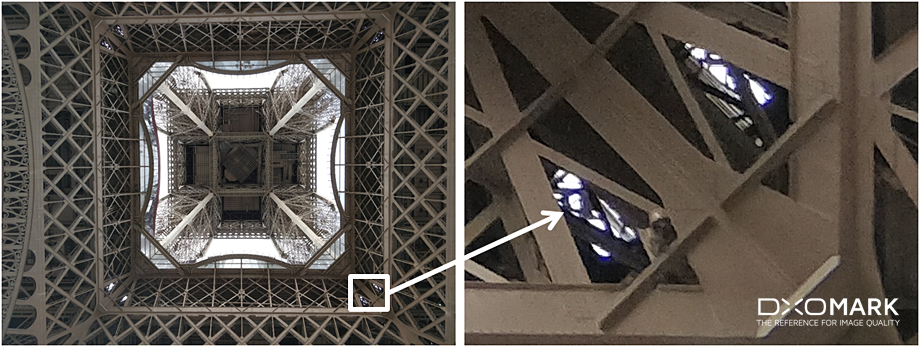
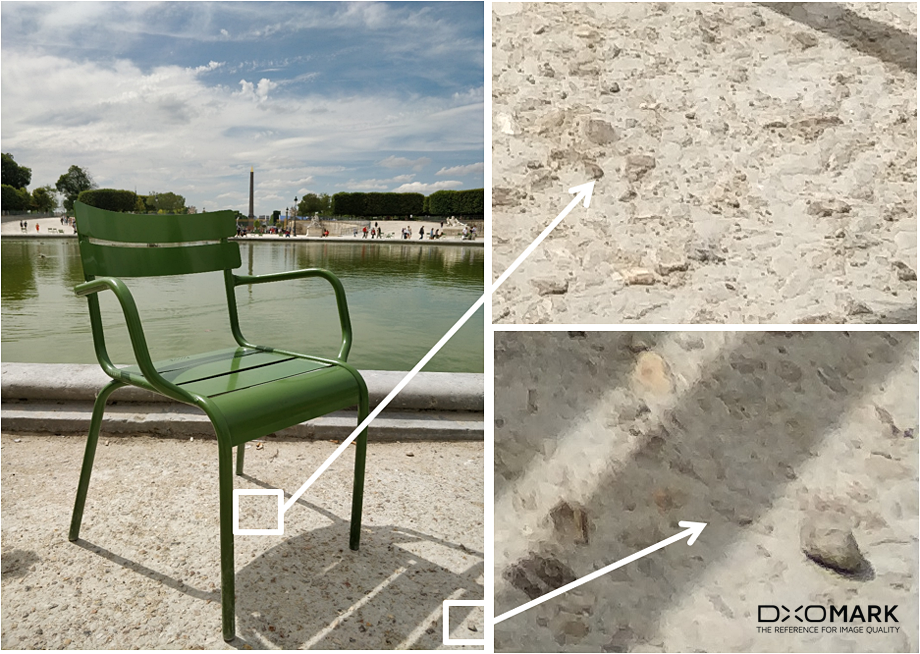
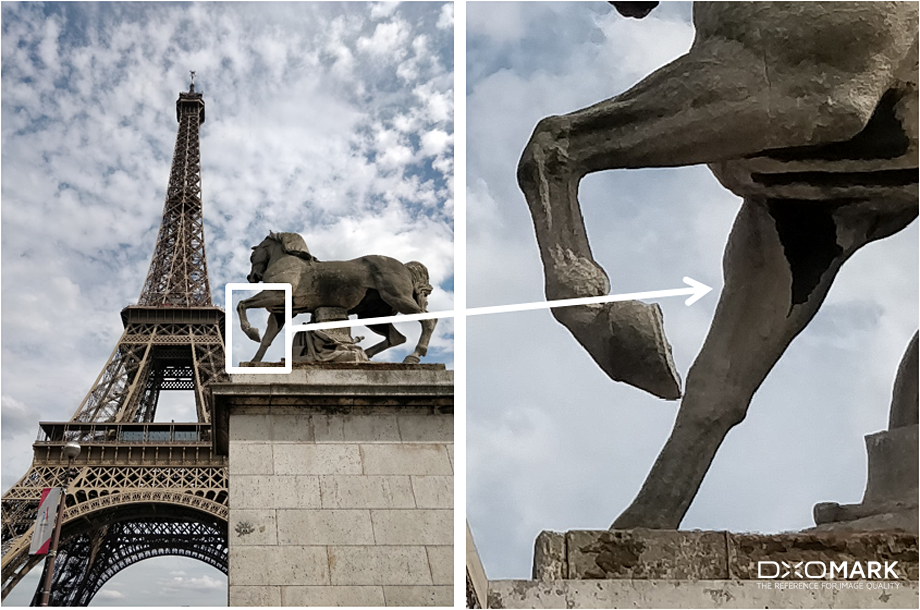
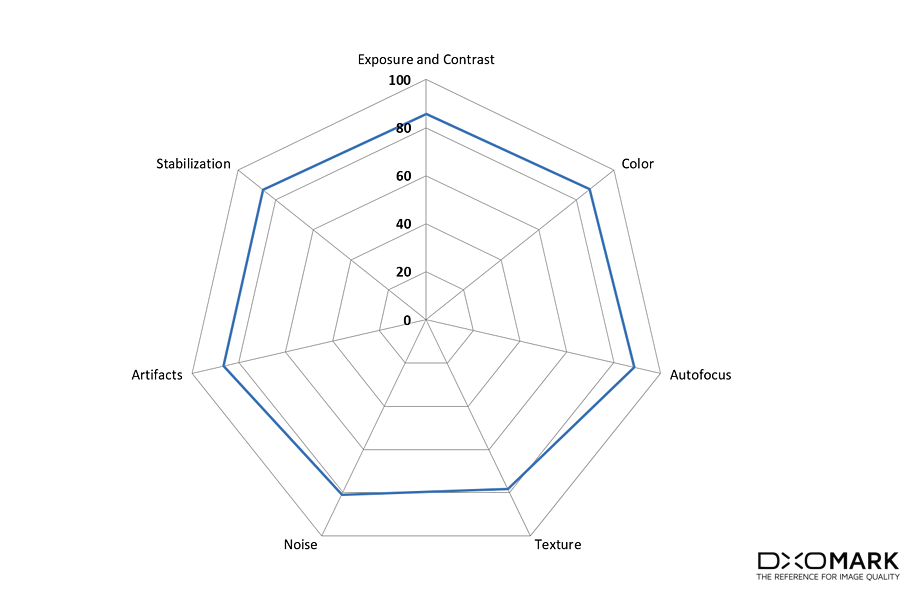
DXOMARK encourages its readers to share comments on the articles. To read or post comments, Disqus cookies are required. Change your Cookies Preferences and read more about our Comment Policy.